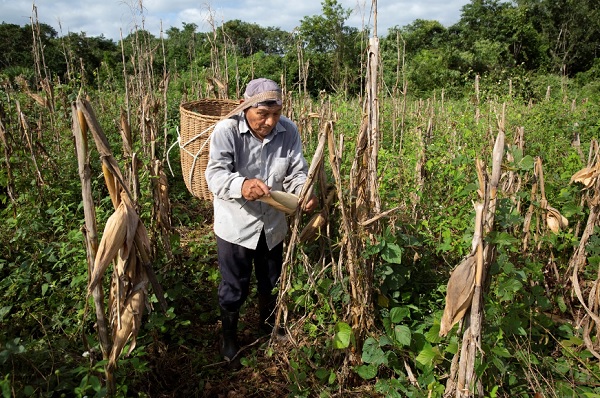More than a dozen distilleries across Mexico make the spirit.
Of the 59 varieties of native corn in Mexico, nal t’eel is one of the oldest, having emerged in the Yucatán Peninsula some 4,000 years ago. It grows quickly, largely unbothered by heavy rains or drought — so robust that the Mayans
called it “rooster corn.”
Like almost all of Mexico’s indigenous corn varieties, nal t’eel in recent decades has faced a seemingly unbeatable threat: high-yield hybrids, developed primarily in the United States and favored for their efficiency, though rarely their flavor.
Fields once dotted with a rainbow of heirloom ears are now awash in wan yellows and whites.
But in 2020 nal t’eel was thrown a lifeline of sorts by Gran Maizal, a distillery outside the Yucatán city of Merida.
Working with local farmers, the company uses nal t’eel and two other indigenous varieties of corn to make whiskey.
There are now more than a dozen distilleries across Mexico making whiskey, most of them using corn native to their region. About half of them export to the United States, among them Abasolo, Sierra Norte, and Maíz Nation.
(Because the category is so new and still quite small, there are no sales figures available).

In September 2023, Gran Maizal also began exporting its whiskey to the U.S., home to the world’s best-known corn-based spirit, bourbon — a move that its founders see as both a challenge and an opportunity.
“Bourbon has been the center of the popularity and growth of whiskey in the U.S. for the last 20 years,” said Gonzalo de la Pezuela, who founded Gran Maizal with Cesar Ayala. “So why not invite people to try a high-end whiskey from the
birthplace of corn?”
Despite their common ingredient, Gran Maizal whiskey is a world apart from traditional bourbons, let alone barley-based whiskeys like Irish and Scotch. In bourbon, the charred oak barrel in which it ages is responsible for most of the
flavor; in Gran Maizal, the centerpiece is the corn.
Click here to read the complete original article by the Baltimore Sun






